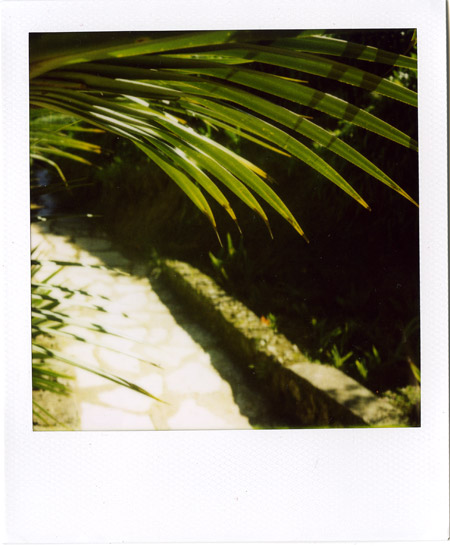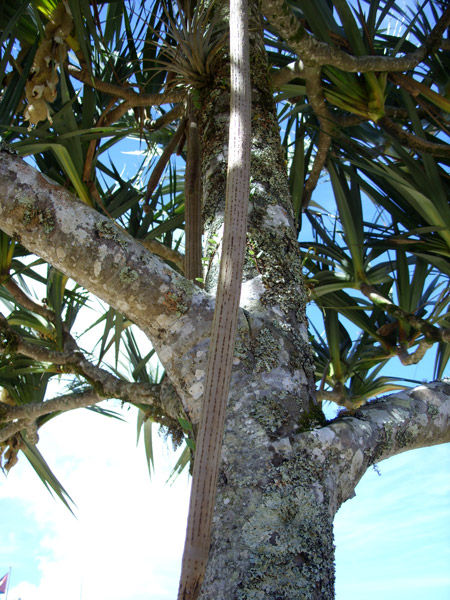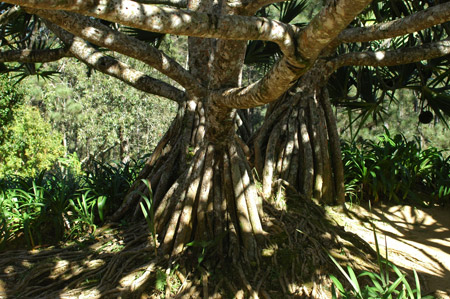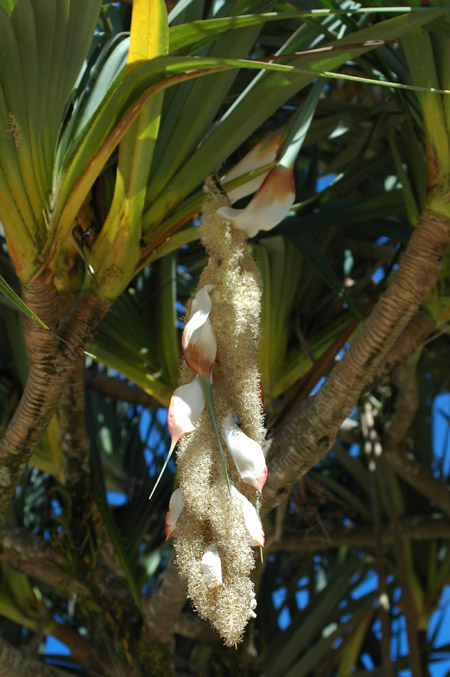
If you’ve been to a tropical country you have probably come into contact with one of the many species of this tree, the Pandanus or Screw Pine. Although not a pine but commonly named for the spiral growth of the leaves, this tree is not native to Cuba but is often planted in tropical countries due to it’s strong fibres that are extremely useful for making ropes, weaving clothing, hats and all sorts of helpful items. It has medicinal uses too although I am not sure what they are.

Our first sighting of a Pandanus was in the Jardin Gran Piedre, a botanical garden and former coffee plantation located high up in the Sierra Maestra mountains. [I will write more about this garden in the future.] The tree was a female and covered in large, interesting fruit, leading us to spend several minutes speculating on what it could be, our guesses almost completely uneducated and based on absolutely no experience whatsoever. We love to do that; pretend like we’re really knowledgeable about things we’ve never seen in our lives and possibly have a clue. We concluded it had to be some kind of breadfruit-like plant until our guide intervened revealing the plant’s name and explaining that the fruit is inedible to humans.

Aerial roots grow down from high up in the tree functioning as prop anchors holding up the heavy, fruit-laden top of the tree during stormy weather.

Another photo of the first tree showing the prop roots. Apparently soil and plant matter is trapped in the roots making the plant a good erosion preventer.

A Pandanus flower
Gayla,
I hear ya on the making uneducated decisions thing. :) My husband and I lived in Hawaii for a few years and for the longest time we had no idea what the tree was either – maybe a freak pineapple? :) Anyway, it is a crazy looking thing, though, isn’t it?
I LOVE this tree! I first saw one in Puerto Rico and am its prisoner… I want one badly. Sigh. Someday…
They really are incredibly strange and beautiful at the same time.
we use pandanus/pandan/screwpine leaves in SE Asian cooking. it has a very lovely scent – grassy sweet scent when crushed. i’ve not seen a pandanus tree (maybe because they are always consumed too quickly!)but we used to grow little shrubs of them.